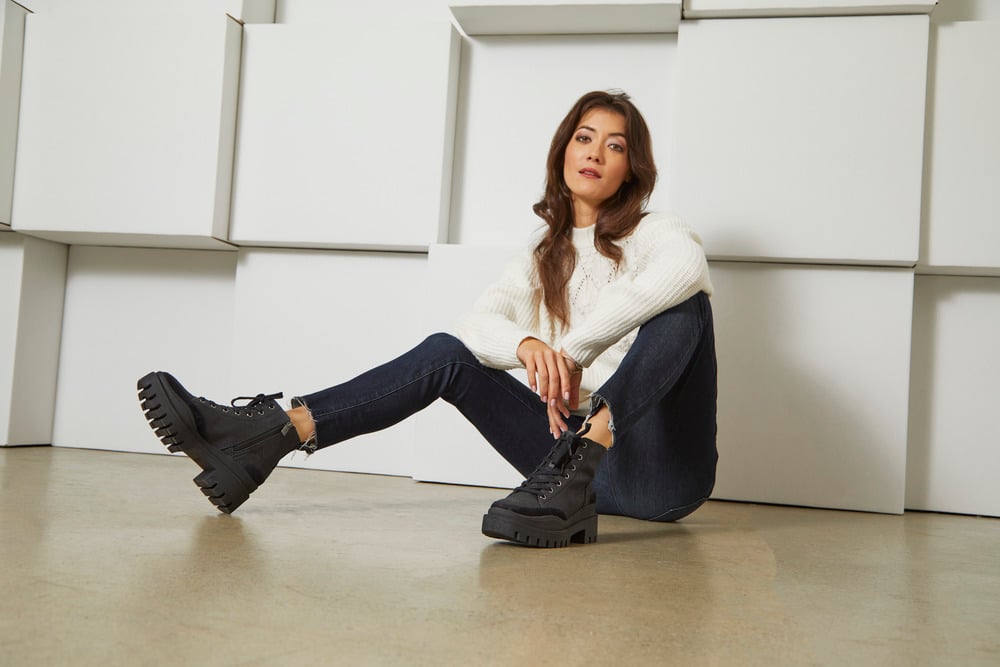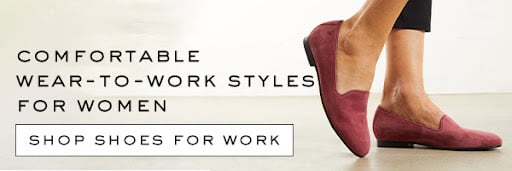
You’ve decided to go barefoot-and-free on your beach vacation or around the house. However, you catch yourself wondering “why do my feet hurt?” To your dismay, you catch a close-up view of your heels and find dry, cracking, hard skin.
This tale is certainly a relatable one. Thick, dead skin on feet is a common problem—but one bolstered by many solutions. How to remove thick dead skin from feet, you ask? You’re in the right place.
In this blog, we’re supplying answers on what causes thick, dead foot skin, how to remove it, how to prevent it, and, of course, why foot care is so paramount to your overall health.
What Causes Thick, Dead Foot Skin?
Let’s start with a quick biology lesson. Your skin is made up of multiple layers. Your body creates new skin cells in the skin’s deepest layer, and during their life cycle, they move toward the surface of your cracked feet.
Eventually, those skin cells die and leave a thick layer of dead skin in their wake. As you shed these dead skin cells, new cells take their place. This whole process is called skin cell turnover and takes about 28 days in an average adult.1
Ideally and in most cases, your body does the job naturally of clearing away thick dead skin cells through shedding and other means. But other times, your body needs a little extra help. Like, for example, clearing dead skin from feet.
To compound matters, repeated friction and pressure on the feet from standing, walking, and exercising can also exacerbate tough foot skin.2
Depending on your overall health, other conditions can add to tough foot skin, including:3
- Irritants – Soaps with harsh chemicals, heat and humidity, and poor-fitting shoes can all irritate your feet and spur the friction that creates a tough foot exterior.
- Medical conditions – Athlete’s foot, diabetes, eczema, hypothyroidism, and psoriasis are all diseases that can cause uncomfortable dry skin on your feet.
Another factor to keep in mind is that skin cell turnover slows with age. So if you’ve celebrated a few birthdays in your time, you might see an increase of dry foot skin.1,3
3 Ways to Remove Thick, Dead Skin from Your Feet
Thankfully, as dry, tough foot skin is a concern of many, a plethora of solutions exists on the market today. Each of these are relatively affordable and attainable at a variety of stores.
Our three favorite strategies to remove thick, dead skin are to:
- Exfoliate
- Soak
- Moisturize
#1 Exfoliate
One of the best ways to remove thick, dead skin is to exfoliate your skin. This process involves removing the dead cells on the surface layer of the skin. The term exfoliate actually means “to come apart in layers,” and that’s exactly what the process does.
Exfoliating your skin involves rubbing a tool, like a brush, or a treatment, like a foot cream, over the surface of your skin. The textures of the exfoliating tool aggravate the very top level of your skin’s surface enough to release those built-up dead skin cells and expose the newer cells.
There are two different types of exfoliants: chemical and physical.3
Chemical Exfoliants
Chemical exfoliants are of the treatment variety and can be rubbed directly onto skin. They contain ingredients that help break down dead skin cells, like acid or alcohol.
Chemical exfoliants include ingredients like:3
- Alpha-hydroxy acid (AHA)
- Glycolic acid
- Lactic acid
While chemical exfoliants are great at what they do, they can irritate, especially if you overuse them or if they contain irritants like artificial fragrances or alcohols. If you have sensitive skin, you may want to use chemical exfoliants less frequently.3
Physical Exfoliants
Physical exfoliants are of the aggravative variety and are rubbed against skin to remove dead skin cells with physical friction. If you’ve ever used a pummice stone, you’ve utilized a physical exfoliant.
Physical exfoliants include products like:2,3,4
- Body brushes
- Electronic callus remover
- Foot scrubs
- Foot files
- Paraffin wax
- Pumice stones
Foot Scrubs
Foot scrubs combine the functionality of both a chemical and a physical exfoliant. They may contain ingredients that help dissolve dead skin, and others that help break down layers of dead skin on the surface.
Getting a foot scrub is a popular solution because you can make them at home with recipes like:4
- Epsom salt scrub – Combine Epsom salts with a tablespoon of olive oil
- Oatmeal scrub – Combine equal parts oatmeal with milk
- Sea salt scrub – Combine two tablespoons of sea salt with baby oil and lemon juice
#2 Soak
Aside from exfoliating, soaking your feet is another way to remove dead skin cells or soften tough skin. A warm-water soak can loosen dead skin, ease discomfort, and even improve blood circulation.3
It’s ideal to combine foot soaks with some sort of exfoliant after the soak has softened the rough skin. Two popular options for foot soaks are:4
- Epsom salts – Mix half a cup of Epsom salts with warm water in a foot bath or a full cup with warm water in a bathtub and soak for 20 minutes.
- Vinegar – Mix one part apple cider vinegar or white vinegar with two parts cool water and soak your feet for 5 to 10 minutes. Avoid doing this more than a few times a week to avoid dry feet
Two additional options may be affective for some people, but should be used cautiously if you have sensitive skin:4
- Baking soda – Baking soda can cause redness, irritation, and dryness because it can disturb your skin’s pH balance. If you do choose to use it, don’t use more than 2 to 3 tablespoons of baking soda in the water.
- Lemon juice – Similarly, lemon juice can also disrupt your skin’s pH balance. You should avoid it if you have any cuts or open sores on your skin or if you have sensitive skin.
#3 Moisturize
If you’ve used an exfoliant or foot soak, you’ll want to follow them up with a moisturizer. But if you only have a moisturizer on hand, it can be a helpful tool on its own for softening tough or dry and rough skin and soothing itchiness and cracking.
There are three main types of moisturizers:3,5
- Emollients – These ingredients add much-needed oil to your skin. Common emollients include plant-based butter and oil.
- Humectants – These ingredients pull moisture from the air into your skin. Common humectants include aloe, hyaluronic acid, and urea.
- Occlusives – These ingredients prevent moisture from leaving your skin. Common occlusives include coconut oil, lanolin, and petroleum.
A word to the wise when shopping for a trusted moisturizer for your feet and the rest of your skin: some ingredients may do more drying than good. When shopping for moisturizers, avoid products that contain:3
- Alcohol
- Artificial colors
- Fragrances
If your feet are in need of maximum hydration, look for moisturizing socks. You can purchase these online or simply apply moisturizer and then put on regular socks. The socks hold the moisturizing ingredients on your skin longer and help it work better by trapping heat inside.3
How to Prevent Thick, Dead Skin
Of course, it’s ideal to prevent thick, dead skin from occurring in the first place. Let’s look at three strategies you can use:3
- Practice foot hygiene – Proper foot hygiene is essential to preventing thick, dead, and dry skin. That means keeping your skin clean, removing dead skin on a regular basis, and moisturizing regularly.
- Soak in warm water – There are a few habits you can integrate into your foot care routine. Try to avoid hot water in showers, baths, and foot soaks. Use warm water instead. Hot water can dry out your skin. Also, pat your feet dry rather than rubbing them with a towel.
- Wear proper-fitting shoes – Finally, you can prevent thick and dead skin with proper footwear. You should be wearing shoes that fit correctly. (More on that below.) This may help reduce swelling in your feet.
How to Find Shoes that Fit Properly
Improperly fitting shoes are a major cause of thick, dead skin. That’s because when shoes don’t fit well, they rub up against your feet more, causing increased pressure and friction.
As a result, be sure to find shoes that fit you properly. You should have half an inch of space at the front of your shoe and an eighth of an inch of space at the back of the shoe.6
When you shop for shoes, take these measurements into consideration:6
- Arch length
- Foot length
- Foot width
But your foot measurements and shoe size aren’t the only criteria to be aware of. Whether you’re going into a store or trying shoes on that you ordered online, here are three more considerations:
- Consider foot swelling – Over the course of the day, your feet tend to swell. That means that it’s best to try on shoes later in the day. Additionally, if your feet are slightly different sizes, buy the shoe size that fits your larger foot. You can pad the shoe of your smaller foot with comfortable insoles.
- Consider sock thickness – Whether you wear socks or tights, the thickness of the material (or the lack thereof) makes a difference in shoe fit. When you try new shoes on, make sure to try them on with the socks or tights you would regularly wear with them.6
- Consider your activity – It doesn’t matter how well a shoe fits if you’re wearing it for the wrong type of activity. For example, there are different types of shoes for different athletic activities, like cross-training, running, or cycling.7
Focus on Foot Health with Vionic
There’s no shortage of reasons to take care of your feet. They carry you through each and every day, no matter if you’re running a marathon or strolling along the beach. During your next barefoot moment, enact these tips to feel your most confident.
And for all the other shoe-donning moments, turn to Vionic footwear. We design shoes for men, shoes for women, insoles for men, and insoles for women dedicated to providing a comfortable fit for all kinds of feet. Our innovative design is backed by the American Podiatric Medical Association Seal of Acceptance.
The best part? You don’t have to sacrifice your style. Explore dozens of styles, colors, and activity levels. Because footwear should be anything but limiting.
Sources:
- “Cell Turnover Is the “Holy Grail of Healthy Skin,” but What Does It Actually Mean?” Well + Good. https://www.wellandgood.com/skin-cell-turnover/
- Krietsch, Beth. “Ask a Dermatologist: 8 Ways to Dissolve (and Prevent) Dead Skin Buildup on Your Feet.” Byrdie. Updated 21 February, 2023.https://www.byrdie.com/dead-skin-on-feet-5080038
- Eske, Jamie. “Best remedies for dry skin on the feet.” Medical News Today. 14 April, 2023.https://www.medicalnewstoday.com/articles/324909
- Chertoff, Jane. “7 Ways to Remove Dead Skin from Your Feet. ” Healthline. Updated 21 March, 2023.https://www.healthline.com/health/how-to-remove-dead-skin-from-feet
- Brown, Kara. “The ‘Big 3’ Hydrators Derms Say All Dry Winter Skin Needs.” Well + Good. 21 January, 2021. https://www.wellandgood.com/humectants-emollients-occlusives/
- Vanderheiden, Terrence. “How to Find Shoes That Fit Your Toes.” Verywell Health. Updated 14 May, 2022.https://www.verywellhealth.com/how-to-find-shoes-that-fit-1337774
- “10 Points of Proper Shoe Fit.” American Orthopaedic Foot & Ankle Society. https://www.footcaremd.org/resources/how-to-help/10-points-of-proper-shoe-fit


Leave a Reply